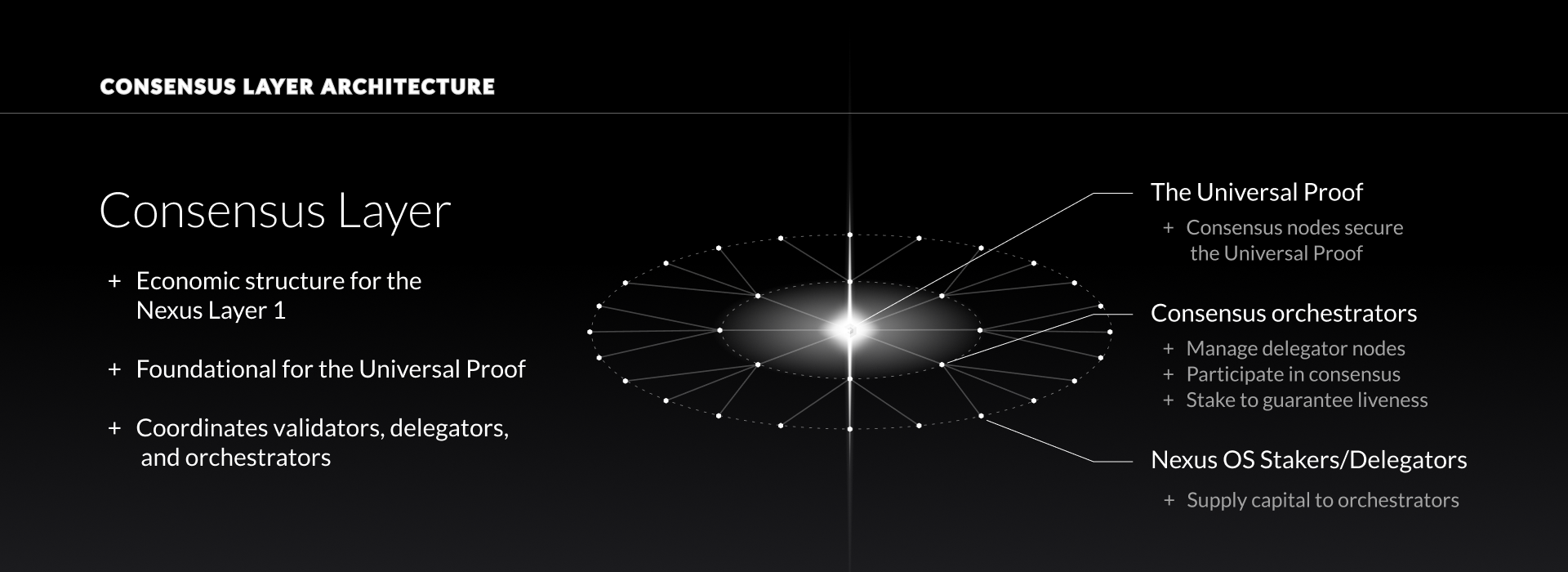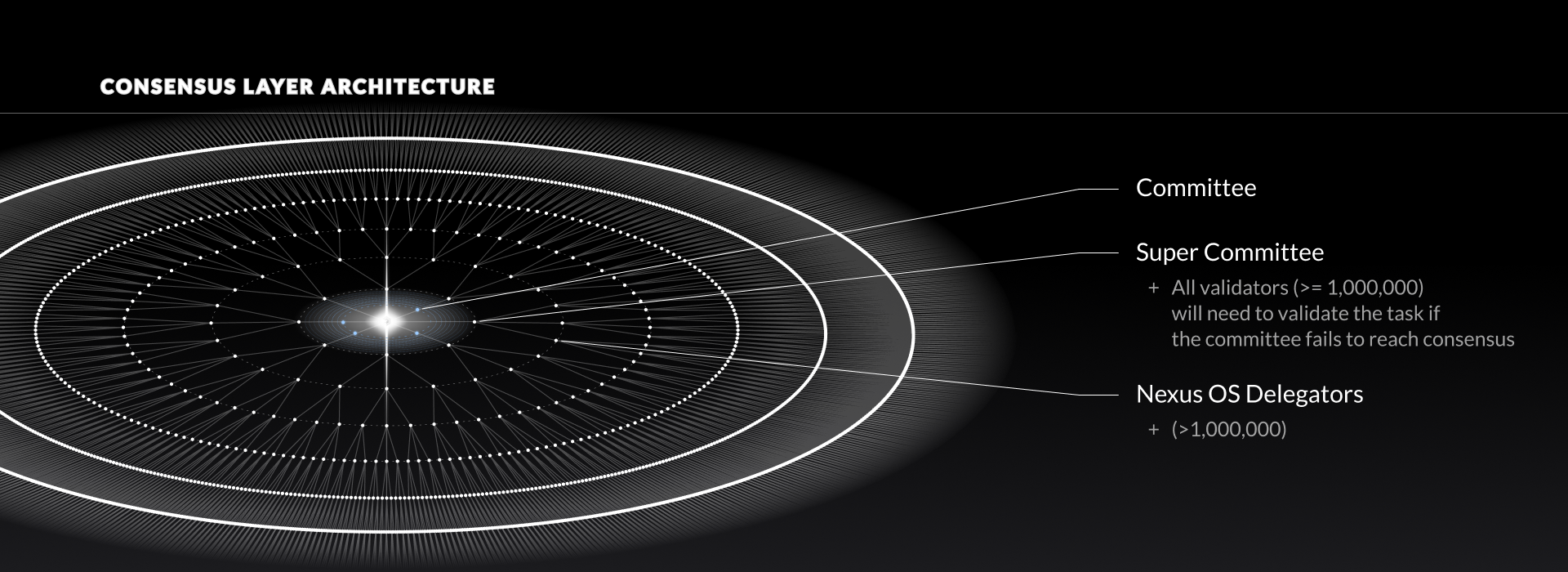Exponential Episode 18: Public Privacy
In this episode of Exponential, Aisling Connolly, Chief Strategy Officer at TACEO, joins the show to unpack the deeper technical

The Universal Proof is a cryptographic artifact that can prove the correctness of any computation on the Nexus Layer 1. For a proof to carry weight — politically, economically, socially — it must be backed by a global, tamper-resistant consensus.
The Nexus Consensus Layer anchors truth in economic reality. It's one of three foundational layers in the Nexus stack. Alongside the Execution Layer, which runs computation, and the Storage Layer, which ensures permanence and retrievability, the Consensus Layer forms an integrated system for verifiable computing.
As we enter the age of AI, this new kind of layered blockchain architecture becomes more significant. Large language models are growing more powerful, and their outputs more consequential.
Yet without transparency, explainability, or auditability, trust in AI becomes a bottleneck. Nexus was designed for this moment. By enabling cryptographic proofs of computation that are economically guaranteed, globally validated, and permanently stored, the Nexus stack offers a path toward machine intelligence that is not only powerful — but accountable.

The Nexus Consensus Layer serves as the economic security layer of the blockchain. Its primary role is to reach agreement on the latest Universal Proof with speed and finality, and to anchor that agreement in real economic weight. The goal is to coordinate a vast network of validators, delegators, and orchestrators to protect the integrity of a universal computational record.
Two goals shape the Consensus Layer's design:
1. Achieve world-scale agreement with as little latency as physics allows.
2. Amass a level of economic stake so large that compromising the system becomes economically irrational.
We call this vision “a capital supercomputer” — a system where computation is secured not just by software, but by capital commitment on a planetary scale.

In traditional blockchain narratives, consensus is often treated as a solved problem. But if we take verifiability seriously — not just for tokens and transactions, but for programs, models, and systems that matter — then consensus becomes a frontier again.
The ability to globally agree on the outcome of a computation, and to do so with resistance to nation-state-level threats, is not a luxury. It is a prerequisite for credible neutrality. Whether you’re proving an AI model’s behavior, verifying cross-chain asset bridges, or safeguarding public-interest data like election results or climate models, the underlying consensus must be fast, fair, and unbreakable.
That’s what Nexus is building: a system of consensus where the cost of fraud is astronomical, and the trust in truth is absolute.

The Nexus Consensus Layer has been designed to scale gradually and deliberately. Its roadmap is organized into ten distinct phases, each unlocking a new level of scalability and security. We begin with familiar primitives — Tendermint-based validator sets and delegated staking — and evolve into a multi-tiered, committee-based structure capable of defending against even prolonged global attacks.
In early phases, validators and delegators play familiar roles: staking tokens, validating blocks, earning rewards. As we progress, the architecture introduces orchestrators, re-delegators, and nested rings of economic defense, each adding redundancy and resilience. Later stages employ HotStuff-2, a modern Byzantine Fault Tolerant (BFT) protocol optimized for lower latency, and introduce epoch-based consensus with rotating committees, ensuring scalability without sacrificing liveness.
By Phase 10, the system supports world committees of 256⁴ nodes, operating with probabilistic fork-choice rules and confirmation times designed to withstand even coordinated, long-lived global attacks.
The endgame is not just decentralization or speed — it’s indestructibility, backed by an economic staking goal of $1 trillion USD.

Security in Nexus is not reserved for a technical elite. The architecture is intentionally inclusive, allowing anyone to participate in consensus via staking. In the early phases, stakers delegate capital to orchestrators, who run consensus infrastructure and participate in proof validation. As the network matures, the system introduces re-delegation, forming a multi-layered mesh of capital and responsibility.
This model enables massive scale — millions of stakers can participate indirectly while still contributing to system security. Just as importantly, it creates economic alignment: the more capital flows into securing the system, the more resistant it becomes to attack, and the more credible its proofs become.
By tying security directly to economic stake, the Consensus Layer turns trust into a public good — one that anyone can help secure, and everyone can rely on.
The Consensus Layer is not just an infrastructure component. It will become a critical component of verifiability on Nexus. As we continue into future mainnet seasons, we’re building toward a system that can underpin not just a blockchain, but a verifiable internet—one where computation is tamper-proof, proofs are globally agreed upon, and trust is enforced by capital at planetary scale.